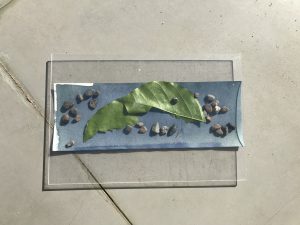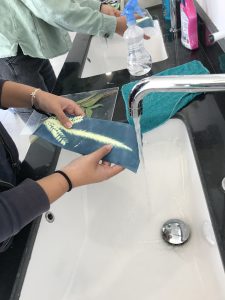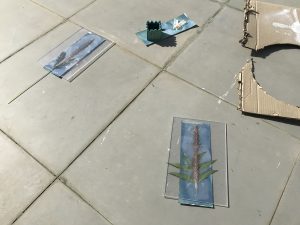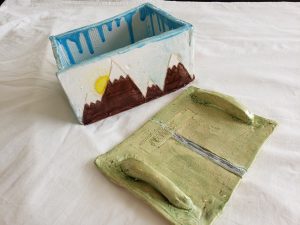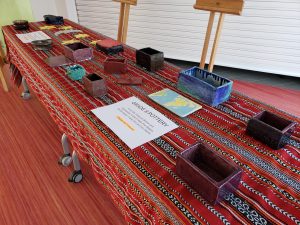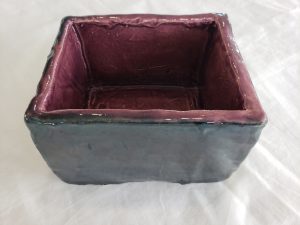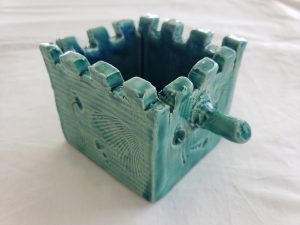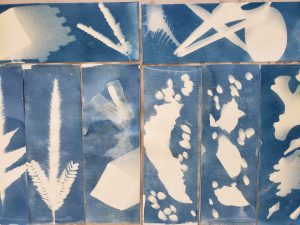Now that students in Grade 8 have finished their clay treasure boxes and put them on display, we are spending the last weeks before winter break exploring a very fun and distinctive printing technique. Before humans had access to digital cameras, we relied on traditional cameras and light-sensitive chemicals, like silver halide, in order to capture a moment in time. Cyanotype is a photographic printmaking process that does not require a camera–instead, a 2D or 3D object is placed directly on a sheet of prepared paper and left in direct sunlight. The UV-sensitive chemicals develop into a deep blue color where touched by the sun; once the leftover chemicals have been rinsed off, all the areas covered up by objects will appear white, the original color of the paper.
The cyanotype process is perfect for Oman due to our consistently sunny climate! The only trick is to make sure the light-sensitive chemicals are mixed in a darkroom environment and the prepared papers kept out of sunlight until they are ready to develop. The chemical mixture is non-toxic and can be applied to more than just paper–it is also possible to print on shirts, bags, and other textiles. Though the prints can fade over time if left in the sun, putting them in a dark drawer for a few weeks can actually cause the image to “heal” itself and regain some of its contrast.


